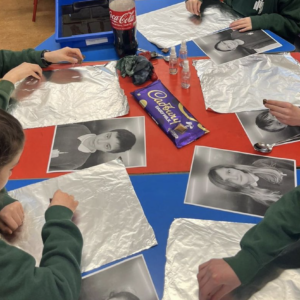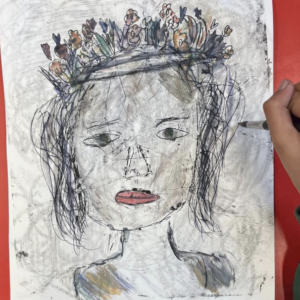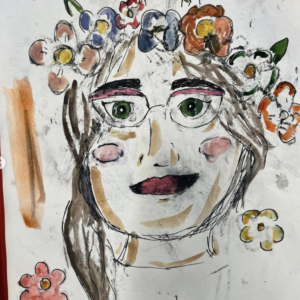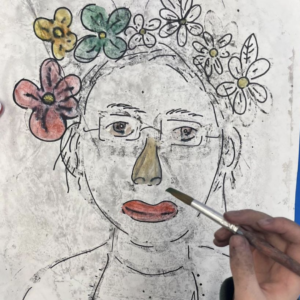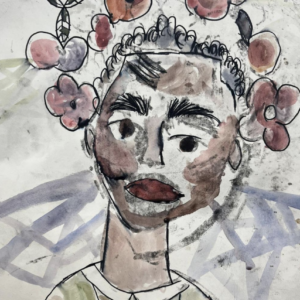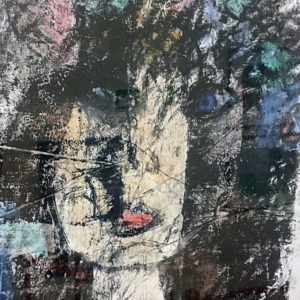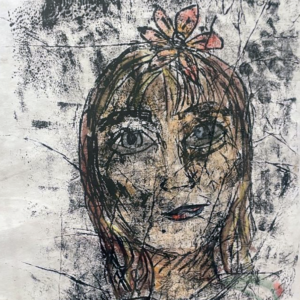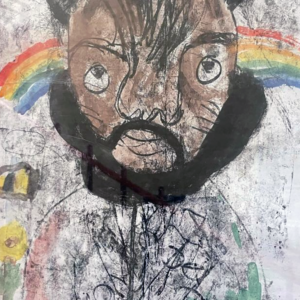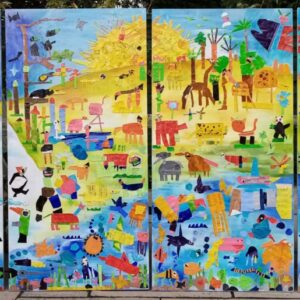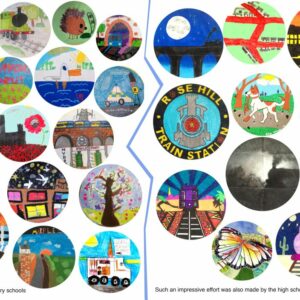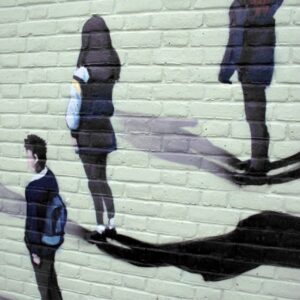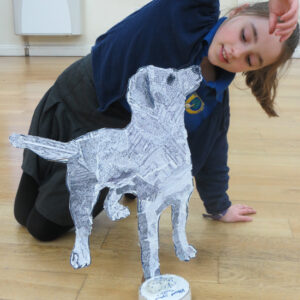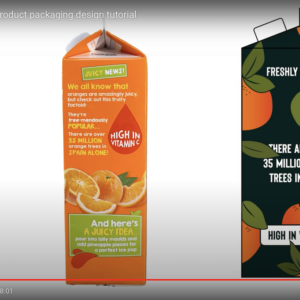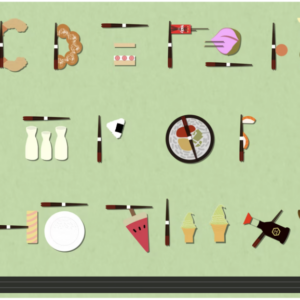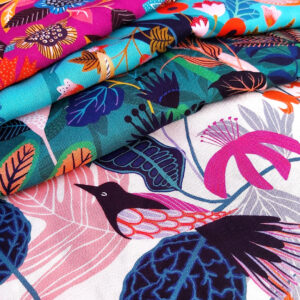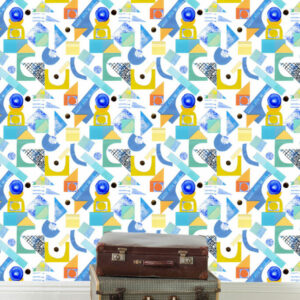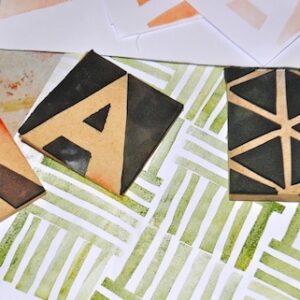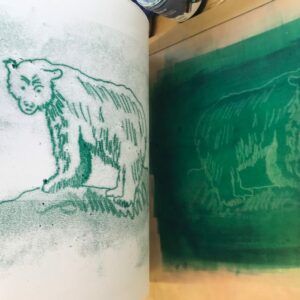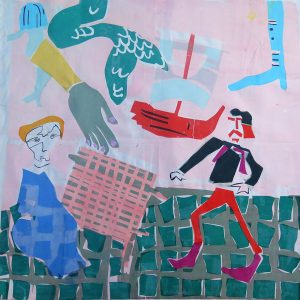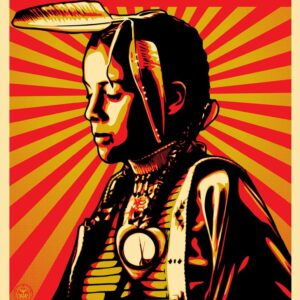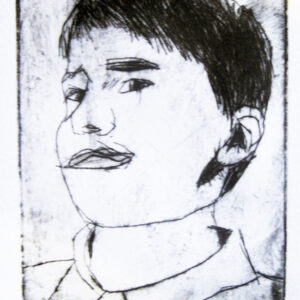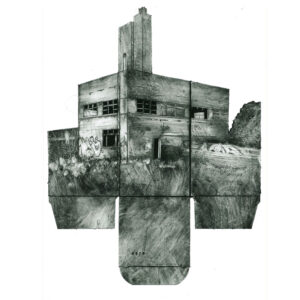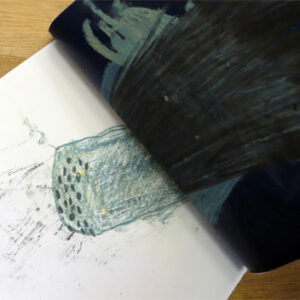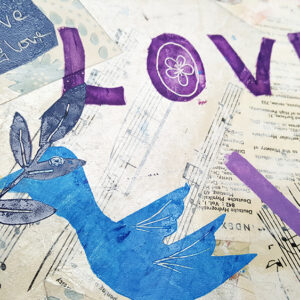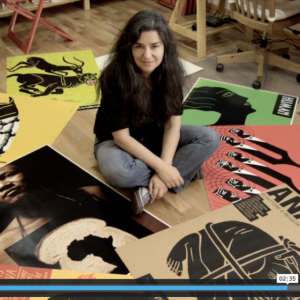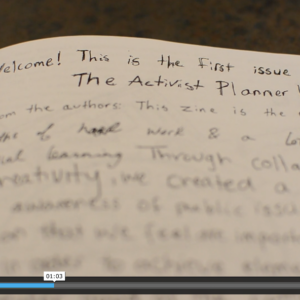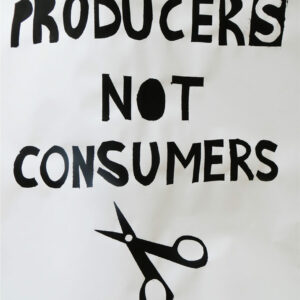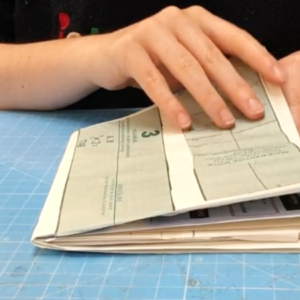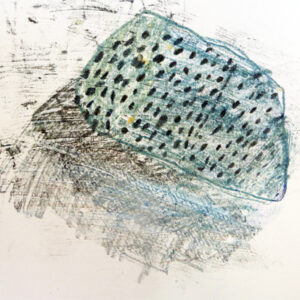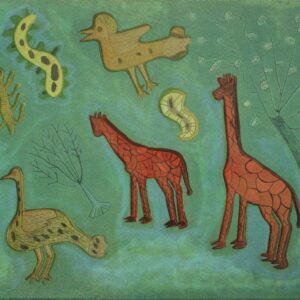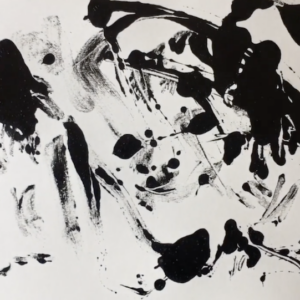By Jan Miller and AccessArt
As part of the Art Cupboard CPD, AccessArt and Jan Miller collaborated to create a list of essential materials for the classroom that won’t break the budget.
Firstly, always make children aware of materials and costs, this will show them that there is a lot of value in materials and will encourage them to look after the materials that they are given. Make sure you also allow enough time to clear up e.g. lids on paints and wash brushes. To make sure that there is as little waste as possible you (the teacher) should dispense glue and paints.
Material Sourcing
- Seawhites tends to be the cheapest. They’re very helpful and it’ll be easier to obtain a Coshh sheet for risk assessment if you stick to one supplier.
- Always ask parents for contacts- we had parent working for Tetrapak who supplied us with card.
- Consider running an event which includes local schools, our local education supplier often sponsors it by donating materials.
- Some suppliers often have a surplus of paper and card, eg cereal card as has expiry date- buy per weight. It’s worth researching.
Graphite Pencils:
- Pencils- HB, 2B, 4B.
- Cheap erasers.
- Water Soluble Graphite.
Pens:
- Handwriting pens double up as a fine liner and means that children can’t erase their work.
- (White posca pens, or a box of colours are a luxury item).
- Black Sharpie are desirable if the budget allows.
- Marker Pens are desirable if the budget allows.
Coloured Pencils:
- Individual packs of Red, Yellow and Blue coloured pencils are useful.
- Full selection of coloured pencils.
- Watercolour coloured pencils create a paint effect when they’re wet.
- (Black Woody’s water-based chunky pencils is a real luxury item).
Ink:
- Indian Ink is desirable if the budget allows and can be uses in small jam pots. Mix with varying amounts of water to have some concentrated inks and some weak inks.
Pastels and chalks:
- Inscribe half soft pastels are cheap and provide bold colours so you only need to use little bits. Avoid Seawhite pastels.
- Oil pastels and crayons should be kept in their trays for as long they you can be.
- Black and white oil pastels bought as one pack. Expressionists are more expensive but last and are larger than Seawhites own.
Charcoal:
- Charcoal– Willow, compressed, pencil.
Paper:
- Lining paper roll is useful for large drawing.
- Carbon paper is reusable
- Spare photocopies can be worked onto creatively with oil pastels to avoid wasting.
- Dust sheets.
- Cartridge paper A3 and upward sizes are best.
- Sugar paper is good for working with high and low lights.
Extras:
- Nibs can be taped onto old pencils/brushes as nib holders are expensive.
- Use cheap hairspray rather than fixative for charcoal work, or leave it near an open window. This will fix it to some extent.
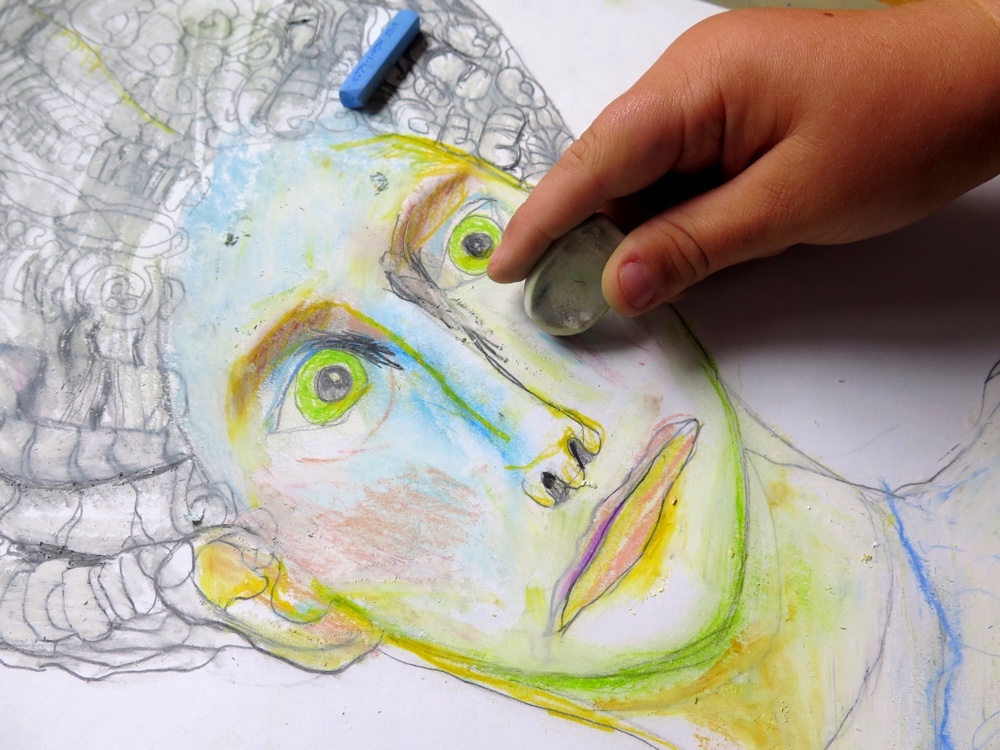
Painting
Brushes:
- Flat hog hair or synthetic brushes.
- Pointed brushes.
- Make your own brushes with found materials.
- Use end of brushes to draw with.
- Detail brushes can be handed out individually and counted in to check they are washed.
- Brush pens are useful for outdoor painting projects.
Acrylic paint:
- Household Emulsion is a good alternative to white acrylic.
- Acrylic paint dispenses quickly and is easily wasted. A teacher should therefore be the one to dispense it for the children.
Watercolour:
- Watercolour- (Koh-i-Noor Anilinky palette £2) These are concentrated strong colours. I would suggest sharing a pack.
- TTS watercolour tin.
Poster paint:
- Fluorescent pink and yellow poster paints are the best quality colours.
Gouache (for older KS2)
- TTS 12 pack of gouache is desirable if the budget allows.
Paint Pallets & Water Pots
- A piece if cardboard is a great alternative to paint palettes if the budget is really tight. I do painting for a week with all classes to avoid waste.
- Jam jars/mushroom tubs are great for big water pots for table.
- B&Q household paint is useful for a lesson spent mixing colours and can be done in a large lidded yoghurt/take-away tubs.
- Use cling film to ‘save paint’.
Paper/Surfaces:
- Cartridge paper A3 and upward sizes are best.
- Sugar paper is good for working with high and low lights.
- If you need coloured large paper use sponge and some watered paint to create a wash.
- Reuse unwanted paintings to work on. They are perfect for having coloured surface to work on top of.
- Work on wood from maintenance offcuts
- Scrap paper for collage.
- Dust sheets.
Extras:
- I use tin foil/foil blanket from first aid kit as collage instead of metal paints.
- Tea/Coffee staining is a good alternative to painting.
- Candles instead or masking fluid for wax resist.
- Develop one piece of art over several weeks. Start with paint for example, then pastel, then pencils etc.
- Plastic mushroom trays can be stacked for wet work to dry.
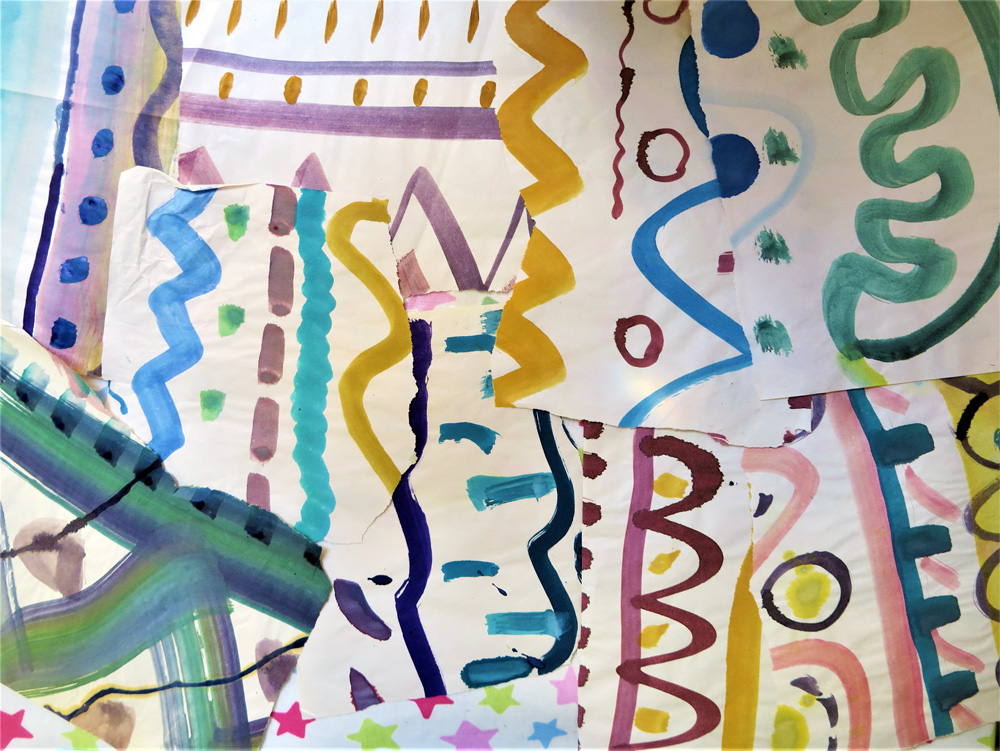
Collage
Materials for collaging with:
- Unwanted artwork is used for collage.
- Wallpaper samples are free from DIY stores.
- Sugar paper, coloured copier paper.
- File boxes for magazine colours.
- Magazine collages.
- Rather than 1 off pieces collage with found materials you can take it into print so you get 2 techniques from 1 piece.
Glue/tape:
- Baby food jars for glue pots.
- Masking tape can be painted to create swashi tape.
- Use PVA rather than pritt stick as it’s stronger.
Extras:
- Black glitter sand is much cheaper than glitter.
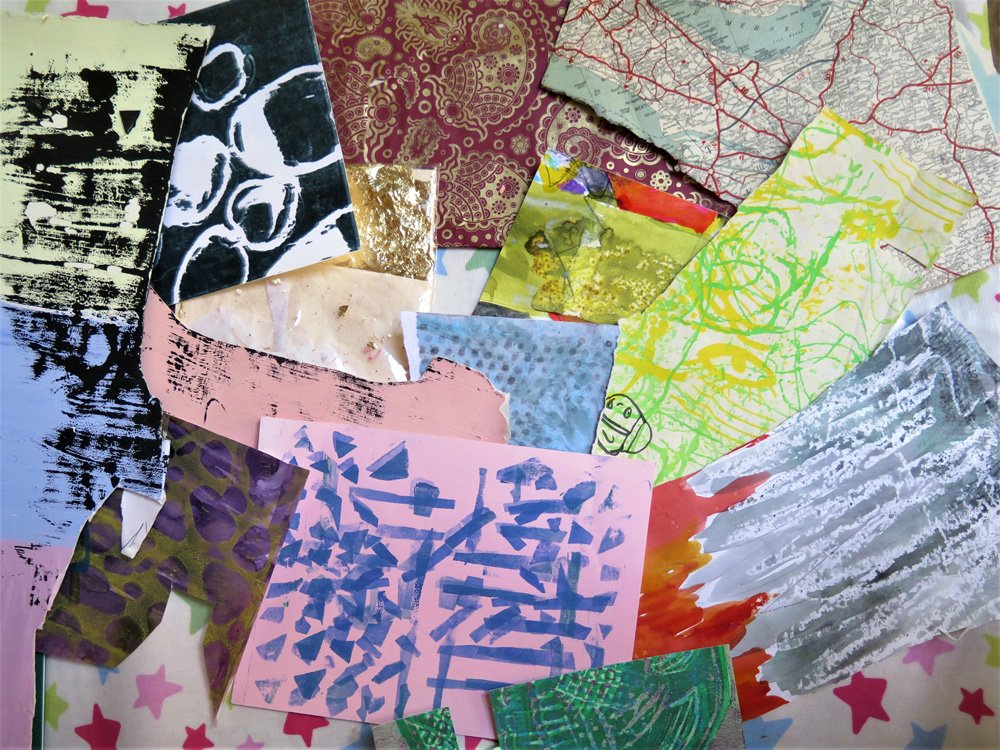
Printing- Collograph & Monoprint
Printing plate/surface:
- The metallic side of Terapak is ideal for pencil drawing/printing and can be found in opened out juice cartons.
- Printing with fruit. Use cut old kitchen sponge to apply a ready mix.
- Sticky backed foam.
- Press print can be made from pizza base polystyrene.
Rollers:
- Small rollers.
Ink:
- Block printing ink.
- Use old plastic white boards or magazine front covers to roll ink out.
Materials for collagraph:
- Found materials- Parental donations/charity shops.
Paper:
- Photocopy paper isn’t good for painting, but is good for printing.
- Cartridge paper A3 and upward sizes are best.
- Carbon paper is good for monoprinting.
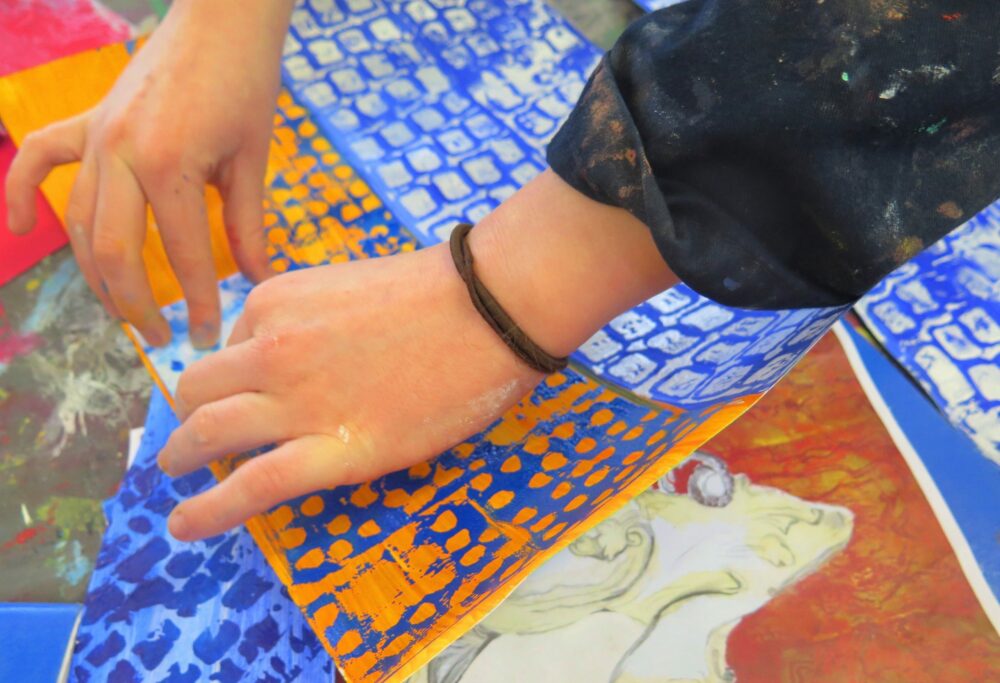
Making
Cardboard:
- Cardboard boxes and papier mache.
- Cereal box card, delivery boxes.
Clay:
- They all use clay during the year but small scale.
- Salt dough.
Papier Mache/structure bases:
- Wet Strength tissue paper.
- Bubble wrap, tape, paper towel and watered glue.
- Twigs, masking tape and wet strength tissue paper.
Tape:
- Gum strip can be cut into pieces in a box to avoid the roll getting wet.
- Tape dispensers save time/waste.
- Wide masking tape is much more useful in making projects.
Wire:
- Coat hangers (avoids wire cutters, dangerous ‘ends’) and old tights.
- aluminium craft wire is very malleable.
Glaze:
- Glazes are expensive so paint, use hi-solids PVA as an alternative.
Glue:
- PVA
Found Materials:
- Old binned blinds, if they’re small, are useful.
- Corks, lolly sticks, paper cups, bubble wrap, egg boxes.
- Wood offcuts can be supplied from maintenance.
Extras:
- Seawhites plasticine £1 per colour. This is a great end of term activity and can be reused.
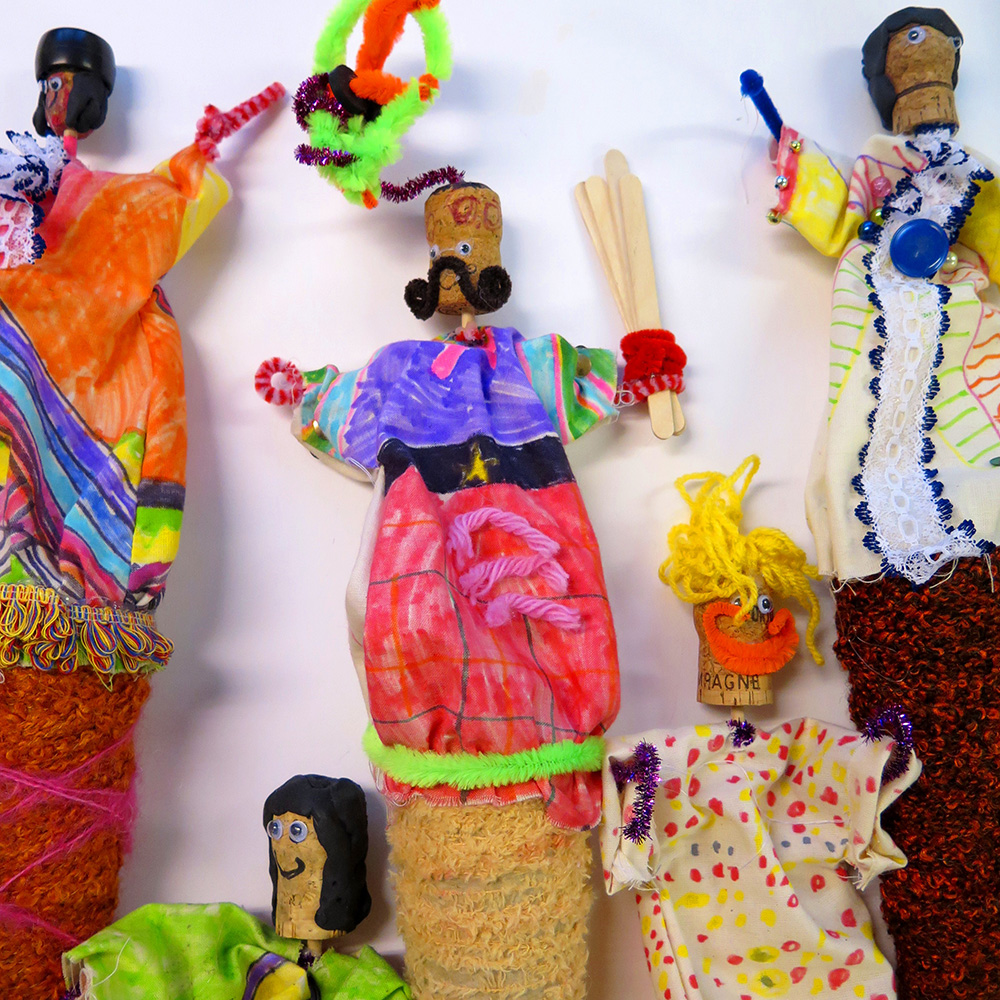
Storage
- Recycling boxes make clearing easier/less waste.
- Encourage pupils to resource own materials and clear away.
- Clear boxes/tins from tuck shop/kitchen.
- Think about the size of making so it can be stored in a box during progress.
- Racks with holes allows you to easily check if all back eg scissors, graphite sticks, glue sticks.
- Group work means that there is less to store and children also help each other.
